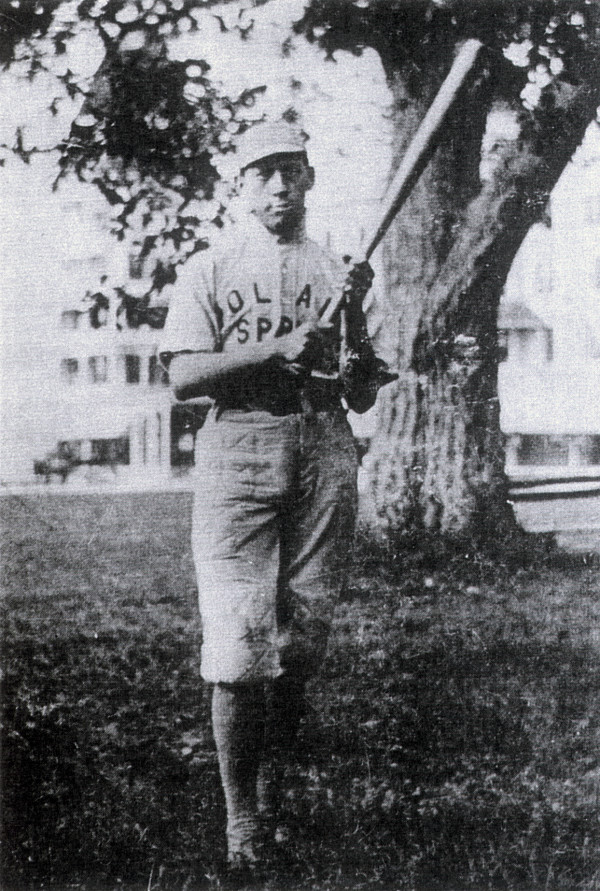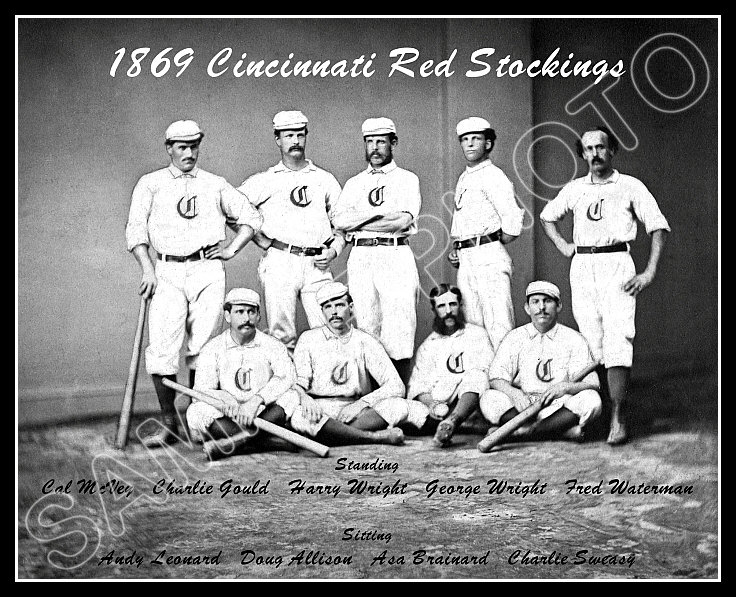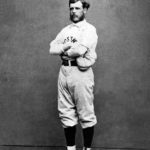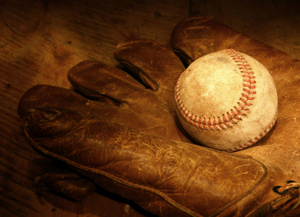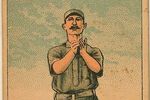Today on February 12th in Major League Baseball History
1878 After designing the device last season to protect his team’s promising, but skittish, catcher James Tyng, Fredrick Thayer receives a patent for his innovative invention, the catcher’s mask. The Harvard captain, who will never play in a major league game, designed an oblong wire frame modeled after a fencing mask with eyes holes that supports a series of strategically-placed pads made from animal skins. Here is an article from the New York Times about fans scoffing at a catcher’s mask.
1924 The National League announces it will join the AL in awarding a thousand dollars to the player selected by writers as the league’s Most Valuable Player. Dazzy Vance, who posts a 28-6 record along with an ERA of 2.16 for the Dodgers, easily outpoints Rogers Hornsby to become the Senior Circuit’s first MVP.
1930 After leading his A’s to a world championship, Connie Mack becomes the first Philadelphian sports figure to receive the prestigious Edward W. Bok Prize. The honor, now known as the Philadelphia Award, recognizes distinguished Philadelphians for their achievements in education, industry, law, politics, science, medicine, philosophy, and the creative arts. Very good article written in the SabrBio Project about Connie Mack.
1942 Former Texarkana outfielder Gordon Houston is the first professional ballplayer to be killed in WW II. The minor league batting champion, who became a full-time fighter pilot following the attack on Pearl Harbor, dies at the age of 25 when his Republic P-43 Lancer crashes at Washington’s McChord Field, after leading a sortie along the West Coast, looking for Japanese submarines.
1944 Bob Coleman, who filled in for Casey Stengel last season when the Boston skipper suffered a broken leg when hit by a taxi cab trying to cross a street, is named to replace the ‘Old Perfessor’ as the manager of the Braves. Considered one of the most successful managers in minor league history, the 54 year-old Indiana native could not work his magic with the wartime club, and after finishing sixth followed by a slow start in 1945, the former big league catcher will be replaced by Del Bissonette, one of his coaches.
1980 Marv Davis’s plan to buy the A’s from Charlie Finley is thwarted when the American League offers to buy out the Oakland Coliseum lease. The billionaire businessman, who will also make failed bids for the NFL’s Cowboys and Broncos, had hoped to move the franchise from the City by the Bay to Denver.
1981 Arbitrator Raymond Goetz officially declares Carlton Fisk a free agent, citing the Boston Red Sox had violated the CBA by not mailing the catcher’s contract by the December 20th deadline as specified in the agreement. Next month, the 33 year-old future Hall of Fame backstop will signed a $3.5 million deal to catch for the White Sox this season.
2002 For the first time in its history, Major League Baseball will own a team after acquiring the Expos from Jeffrey Loria. The former Montreal owner sells the Expos for $120 million, then buys the Florida Marlins for $158.5 million with the difference being made up with a loan from major league baseball.
With unanimous approval of the sale of the Florida Marlins to the former owner of the Montreal Expos, Jeffrey Loria, and Major League Baseball’s acquisition of the Montreal franchise, personnel changes are announced. The Expos name Frank Robinson as manager, Tony Tavares as president of the club with Omar Minaya becoming the major leagues’ first Hispanic general manager, and south of the border former Expo manager Jeff Torborg will manage the Marlins with former Expos’ interim general manager Larry Beinfest as the GM and David Samson will take over the duties of team president.
2003 Federal Judge James Holderman has given the Cubs and the owners of rooftop bleachers which provide fans a view of Wrigley Field a year to settle their dispute. The team believes the seating provided above the field via rooftops directly competes with the club for ticket sales revenue and the surrounding neighbors, in turn, have not been sympathetic to the team’s expansion plans.
2007 The Major League Baseball Players Association asks the 9th U.S. Circuit Court of Appeals to reconsider its 2-1 decision which would allow the names and urine samples of more than 100 players who tested positive for performance enhancing drugs to be made available to authorities investigating the use of steroids in baseball. The 1993 samples were collected by MLB in an effort to gauge the prevalence of steroid use with players and owners agreeing the results would be confidential.
2007 After a year of negotiations, an agreement is reached on the sale of the Braves from Time Warner to Liberty Media. Seventy percent of the owners must approve the deal which includes the retention of general manager John Schuerholz and manager Bobby Cox.
2008 The Twins, in an effort to add experience to a young rotation, sign Livan Hernandez (11-11, 4.93) to a $5 million, one-year deal with an additional $2 million in performance bonuses. The 32 year-old right-hander from Cuba will also add innings to a staff depleted due to the departures of starters Johan Santana and Carlos Silva.
2009 Three days after Alex Rodriguez apologizes for using steroids, commissioner Bud Selig chastises the Yankee superstar, and all the other players, who used such substances, for bringing shame to the game. The third baseman’s apology followed a SI.com report that he was one of 104 players who tested positive in tests taken in 2003 to determine the extent of steroid use in the national pastime.
2009 Ervin Santana avoids arbitration, agreeing to a deal with the Angels which could be worth $42 million over the next five years. The 26 year-old right-hander, who posted a 16-7 record with a 3.49 ERA for the AL West Champions last season, is the youngest active hurler with 50 career victories (51-37).
2009 Dan Uggla (.260, 32, 92), eligible for arbitration for the first time, is awarded $5.35 million by the process. The All-star second baseman, who has averaged 30 home runs and 90 RBIs his first three seasons in the majors, rejected the Marlins’ offer of $4.4 million.
2009 Jose Offerman, a former All-Star major league infielder with the Red Sox and Dodgers, is sued by John Nathans for his bat-wielding attack at a minor league game in Bridgeport, Connecticut. The Bluefish catcher is seeking $4.8 million in damages against the Long Island Ducks player, claiming the 2007 incident left him with career-ending injuries which include inner ear damage, vertigo, headaches and post-concussion syndrome.
2010 Corey Hart (.260, 12, 48) is awarded a raise from $3.25 million to $4.8 million in the Brewers’ first salary arbitration hearing in a dozen years. In the first case to use the process this year, Milwaukee’s offer of $4.15 million to their 27 year-old right-fielder, an All-Star in 2008, was rejected by a panel of arbitrators.
2010 Tim Lincecum, two-time reigning NL Cy Young Award winner, reaches a preliminary agreement on a $23 million, two-year deal with the Giants prior to the start of a scheduled arbitration hearing. The 25 year-old right-hander has compiled a 40-17 record along with an ERA of 2.90 ERA during three big league seasons with San Francisco.
2011 “Doris From Rego Park” makes its debut on Jonathan Schwartz’s weekend program on WNYC-FM. The song, written and performed by Don Rosler, is a tribute to Doris Bauer, the Mets fan who became a New York institution as a late-night caller to WFAN sports radio before she died in 2003.
2014 Derek Jeter, who will turn 40 during in June, announces the 2014 season will be his final one, informing his fans via a lengthy Facebook post. The 13-time All-Star shortstop acknowledged that his numerous injuries have taken their toll, making the game more of a struggle and less enjoyable.

